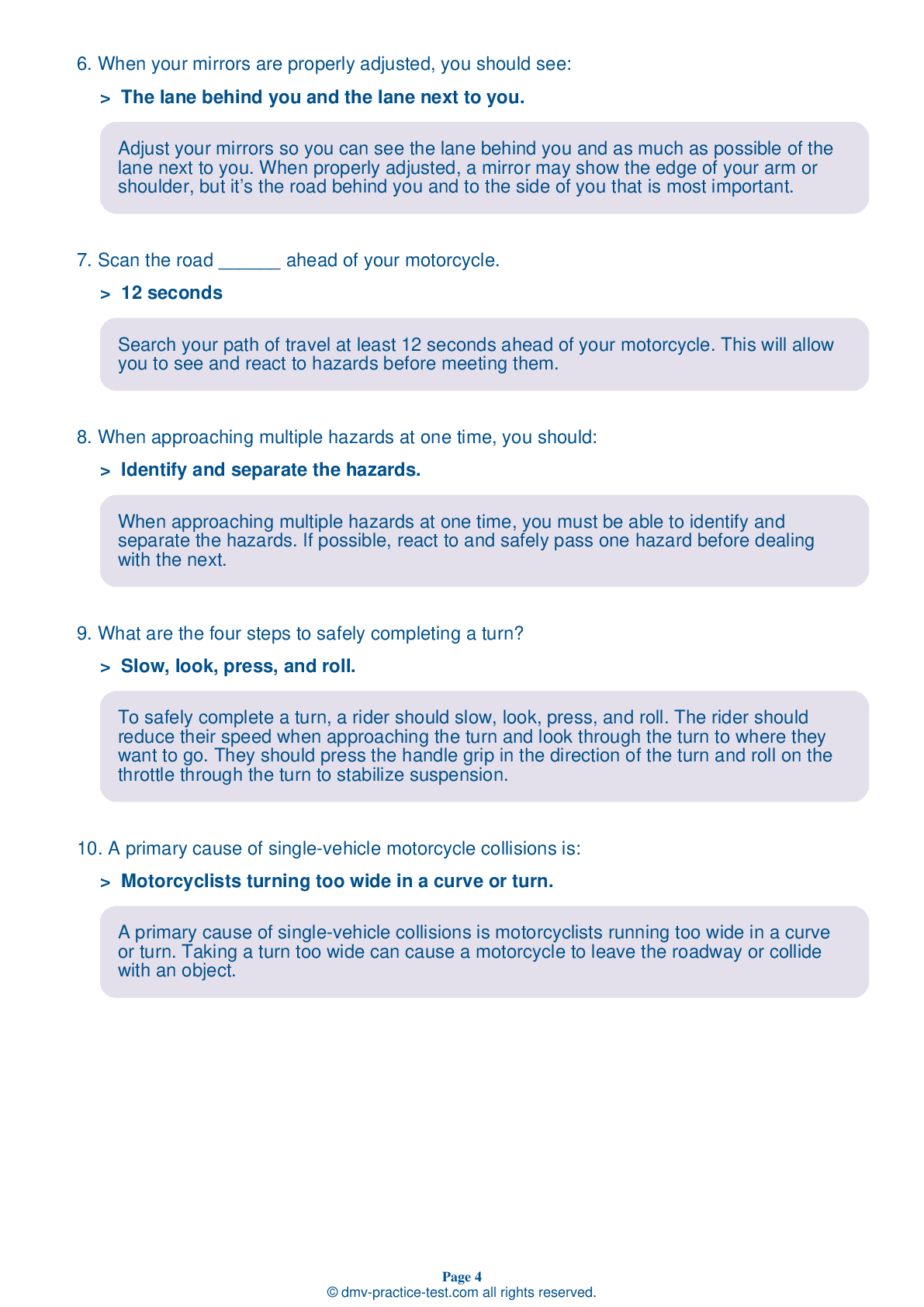Motorcycle Test | License MD 2025 | FREE Online Practice! #15 Page 4 of 4
Take this FREE motorcycle test (license in MD 2025) to check your knowledge of the road rules. To improve your results, download a motorcycle handbook online, study theory, and practice for free on our website. Still worried about how to get a motorcycle license in Maryland in 2025? Check our website for more sample tests, train as much as possible, and boost your grades!
19 . You should check your tires for all of the following, except:
When doing a pre-ride inspection of your motorcycle, you should check the air pressure, general wear, and tread of your tires.
20 . The minimum size of a legal rearview mirror is:
A rearview mirror is one of the most important pieces of equipment on a motorcycle. The reflective surface of a rearview mirror must be at least seven square inches in area, allowing you to see part of the lane behind you and part of the lane next to you.
21 . Which riding formation should be used when entering a curve or leaving a highway while traveling in a group?
While it is generally best for groups of riders to travel in a staggered formation, it is safer to switch into a single-file formation when taking curves, turning, or entering or exiting a highway.
22 . If your drive chain breaks, you:
If your chain breaks while you are riding, you will notice an instant loss of power to the rear wheel. Close the throttle and brake to a stop.
23 . What are the four steps to safely completing a turn?
To safely complete a turn, a rider should slow, look, press, and roll. The rider should reduce their speed when approaching the turn and look through the turn to where they want to go. They should press the handle grip in the direction of the turn and roll on the throttle through the turn to stabilize suspension.
24 . If your motorcycle begins to wobble, you should:
Trying to accelerate out of a wobble will only increase the problem. Instead, grip the handlebars firmly, slow down while gradually closing the throttle, move your weight as far forward and downward as you can, and pull off the road as soon as you can. Once off the road, you should address the problem causing the wobble.
25 . A motorcycle operator can improve their visibility by:
To maximize your chances of being seen by other road users, you should wear brightly-colored clothing with reflective materials, use your headlight at all times, and use your signals and brake light properly.
See the exact questions that will be on the 2025 Maryland DMV exam.
99.2% of people who use the cheat sheet pass the FIRST TIME
Jeneen was tired of paying $5/gallon. She got herself a scooter that required the motorcycle license. She studyed the motorcycle test cheat sheet and passed her test the next day!
Christopher tells us how he knew nothing prior to obtaining the motorcycle study guide, and he only got one question wrong because he clicked on the wrong answer by mistake.



